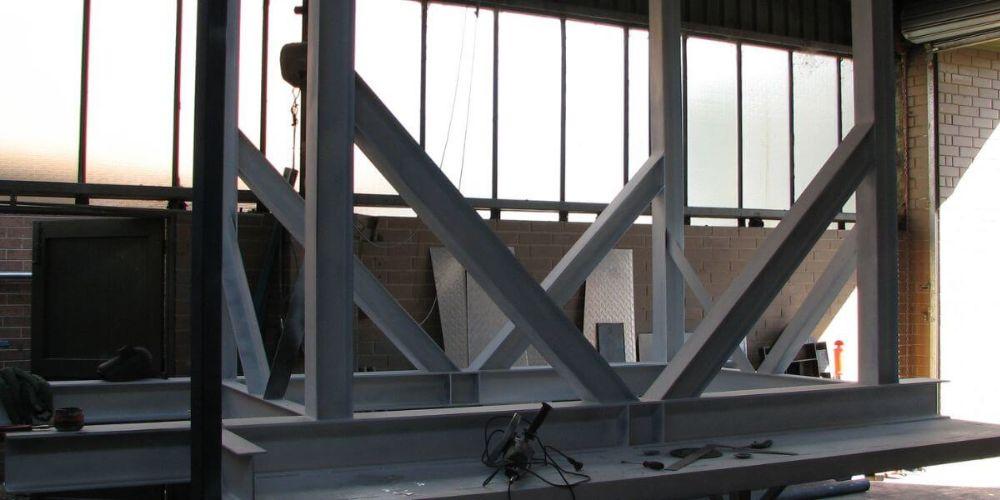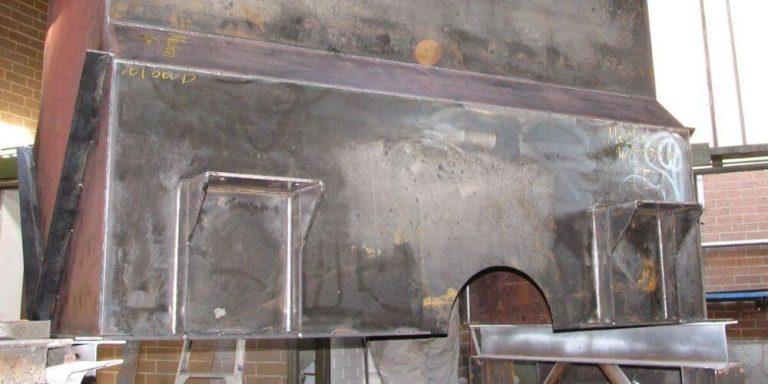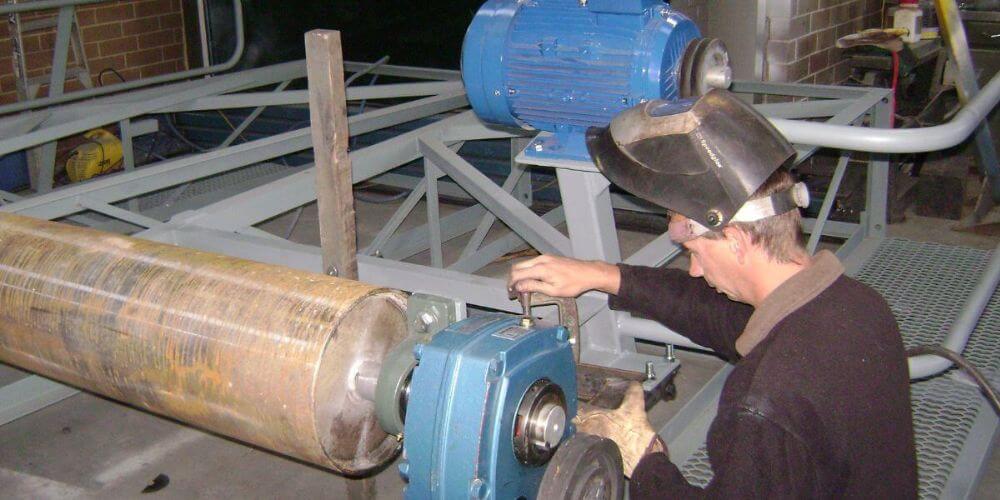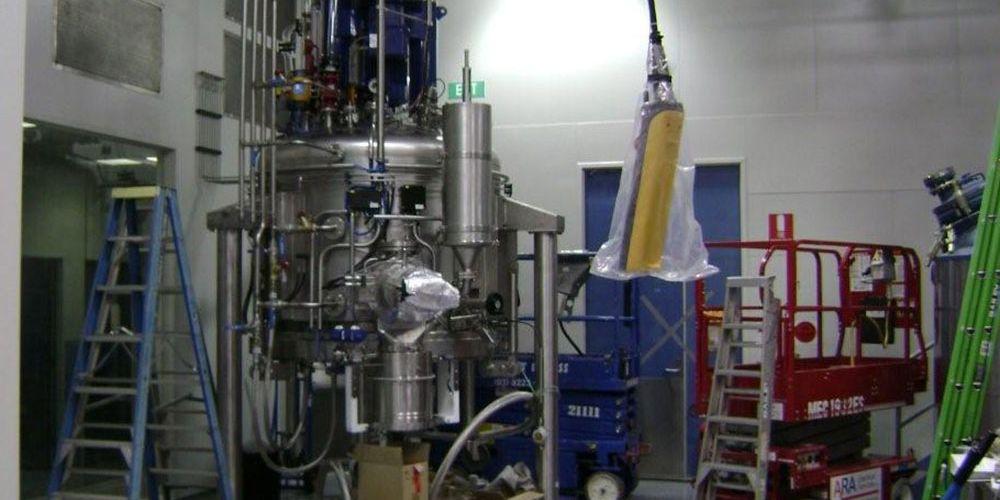Luke Cahill
What can a metal fabricator do for you?
Reading Time: 9 minutes and 22 seconds

Let’s get straight to the point.
Metal fabrication is far more than just bending and welding metal. It’s about solving problems, creating solutions, and building things that last. As a seasoned metal fabricator with years of hands-on experience in the trade, I have personally seen how this craft helped many businesses and industries.
I began my journey as a young apprentice, eager to learn the trade. Those early days were definitely difficult and challenging, but the satisfaction of seeing my work come to life and seeing how my skills were improving kept me motivated. Through hard work and dedication, I’ve built a successful business—Mechcon Welding and Fabrication—committed to delivering top-quality metal fabrication services. Now, I want to share what metal fabricators do and why our work is so important.
Table of Contents
What is the role of a metal fabricator?
A metal fabricator is a skilled tradesperson who works with raw metal materials to create various structures and products. We cut, bend and join metal pieces to construct everything from intricate engine parts to sturdy steel bridges and stainless steel rails. Metal fabricators play a crucial role in multiple industries and contribute to projects essential for various industries.
Responsibilities of a metal fabricator
Let’s dive into what a typical day looks like for a metal fabricator like me at Mechcon Welding and Fabrication in Melbourne.
Reading and Interpreting Engineering Blueprints
First off, my day usually starts with a cup of coffee and a deep dive into detailed engineering blueprints. These blueprints are our roadmaps, guiding us in creating precise metal components. Without them, we can’t even get things started!
Constructing Base Templates
Sometimes, we need to build base templates or jigs. These templates are like our best mates, ensuring we get consistent measurements and shapes every single time.
Measuring and Marking Out Cutting and Bending Lines
Next, it’s all about precision. Using rulers, calipers, and other measuring tools, I mark out lines for cutting, bending, and shaping the metal pieces. Accuracy here is crucial; one small mistake can throw everything off. Here at Mechcon Welding & Fabrication, this is one of our strengths.
Setting Up Metalwork Machinery
Then, I set up various machines, including rollers for bending metal sheets, drill presses for creating holes, flame cutters for precision cutting, brakes for bending metal at specific angles, and shears for straight cutting. Each machine has its role and helps us achieve the perfect cut or bend.
Double-Checking Design Specifications
Before we start cutting or shaping, it’s essential to double-check that everything aligns with the design specifications. This step ensures the final product meets the required standards.
Fabricating and Constructing Metal Components
Now comes the fun part – fabricating and constructing metal components. This involves cutting, shaping, and welding metal pieces to create various components. For instance, we recently fabricated parts for a custom machinery build, including conveyor belts and gearboxes.
Grinding and Finishing Completed Products
After welding and assembly, we smooth rough edges and surfaces through grinding, ensuring a polished finish.
Performing Quality Checks
Quality is paramount. We inspect finished products for defects, accuracy, and adherence to specifications, ensuring safety and functionality.
Conforming with Safety Regulations
Safety is always top of mind. We strictly follow state and company safety guidelines to handle tools and materials properly and prevent accidents.
Completing Job Reports
Finally, documentation is essential. We record details about each project, ensuring everything is well-documented and traceable.
Specific Processes of Metal Fabrication and Why They are Important
There are several critical processes I employ in my metal fabrication work. I’ll break down these techniques and explain how they contribute to the overall quality and success of a project.
| Process | How it works | Examples |
| Shot Blasting | Shot blasting removes rust, scale, and contaminants from metal surfaces, preparing them for painting, welding, or further fabrication. Without shot blasting, the paint wouldn’t adhere properly, and the welding wouldn’t be as strong. | Prepping the metal surfaces of an old industrial machine for repainting at a local factory |
| Cutting | We utilise plasma cutters, laser cutters, and water jets for precise cutting, ensuring accurate shapes and dimensions. Accurate cutting is vital for ensuring the metal pieces fit together perfectly in the final assembly. | Cutting custom architectural metal panels for a high-rise building project in downtown Melbourne. |
| Bending | Bending machines (brakes) are used to create angles and curves in metal, essential for forming components such as brackets and frames. | Forming metal brackets for the support of a bespoke outdoor sculpture commissioned by a residential development project. |
| Welding | Welding involves joining metal pieces using various techniques (MIG, TIG, arc welding) to ensure structural integrity and durability. Onsite welding is crucial to ensure the system’s components are securely joined and can handle the operational loads. | Conducting onsite welding for the assembly of a large commercial conveyor system in a local Melbourne manufacturing facility. |
Statistics on Metal Processing Stainless Steel

In Australia, the steel industry is a significant contributor to the economy. As of the latest reports, Australia produced approximately 6 million tons of steel annually. At Mechcon Welding and Fabrication, we process a substantial portion of this steel through our various fabrication methods, contributing to numerous commercial, residential, and government projects across Melbourne.
Each of these processes is integral to our work, ensuring we deliver robust, high-quality metal fabrication solutions tailored to our clients’ needs. Whether it’s prepping surfaces, making precise cuts, forming exact shapes, or ensuring strong welds, every step is essential in creating durable and reliable structures.
What are the skills needed to be a successful metal fabricator?
Becoming a successful metal fabricator in Australia requires a combination of technical expertise, problem-solving abilities, meticulous attention to detail, and recommended educational attainment. Let’s explore the critical skills that can help fabricators thrive in Australia’s dynamic industrial landscape.
Technical Understanding
First off, you’ve got to be comfortable with blueprints and specifications. Interpreting these complex drawings is like second nature to me now, but it wasn’t always that way. I remember my early days, staring at blueprints and trying to make sense of all the lines and symbols. It’s crucial because these blueprints guide us in creating accurate metal components.
Knowing your materials is another big one. Each metal, whether it’s aluminium, copper, or steel, behaves differently when you’re working with it. I learned this the hard way when I first tried welding aluminium with the same technique I used for steel. Spoiler alert: it didn’t work!
Problem-Solving Skills
In this line of work, you’re going to run into unexpected issues. Maybe the material isn’t behaving as you expected, or an alignment is off. I’ve had to learn to think on my feet and come up with solutions quickly. Being adaptable is key. I’ve had projects where I had to completely change my approach mid-way through to get the desired result.
Attention to Detail
Precision is everything in metal fabrication. I can’t stress this enough. One tiny error can throw off an entire project. I once had to scrap a whole batch of parts because I was off by just a millimetre. Now, I triple-check everything to make sure it’s spot on.
Hands-On Skills
You’ve got to be good with your hands. Whether it’s cutting with a plasma cutter, bending with brakes, or welding pieces together, these are the bread and butter of our work. I still remember the first time I used a plasma cutter—it was like wielding a lightsaber!
Safety Awareness
Safety is a big deal. We work with heavy materials and powerful tools, so following safety protocols is non-negotiable. I always make sure to wear my PPE and stay aware of my surroundings to avoid any accidents.
Communication Skills
Good communication is crucial. Whether it’s discussing project details with a client or coordinating with a team, clear communication ensures everyone is on the same page. Misunderstandings can lead to costly mistakes.
Focus on Quality
We take pride in our work at Mechcon Welding and Fabrication. Attention to detail and a commitment to quality are what set us apart. I always perform quality checks at each stage to prevent defects and ensure the final product is safe and functional. I always want to make sure our services are worth our clients’ money!
What tools and technologies are used in metal fabrication?
As a metal fabricator, having the right tools is crucial to achieving precision and quality in every project. Here are some essential tools I use daily at Mechcon Welding and Fabrication, along with their functions and examples of how I’ve applied them in my work.
| Tools | Function | Examples |
| Metal Shears | Cutting sheet metal efficiently | Used shears to cut sheet metal for custom signage for a Melbourne business. |
| Metal Rollers | Shaping flat metal sheets into curves or cylinders | Shaped metal sheets into pipes for a plumbing project. |
| Press Brakes | Bending sheet metal into specific angles | Used press brakes to create brackets for a residential building project. |
| Laser and Plasma Cutters | High-accuracy cutting of metal | Utilised plasma cutters for intricate designs on architectural panels for a high-rise building. |
| Beam Coping Machines | Coping (notching or shaping) structural steel beams | Notched beams for a steel structure in a commercial warehouse. |
| Bandsaw | Cutting curves and irregular shapes in metal | Used bandsaw to cut curved metal pieces for a bespoke sculpture. |
| Die Grinder | Grinding, sawing, honing, and polishing metal | Polished welded joints on a custom metal gate for a residential property. |
| Metal Nibbler | Cutting sheet metal with minimal distortion | Created small channels in corrugated metal for a roofing project. |
| Flux Core Welder | Semi-automatic or automatic arc welding | Used flux core welder for general repairs on a farm machinery. |
| Center Punch | Marking the center point on metal before drilling | Marked drilling points on metal plates for an industrial machinery installation. |
| Drill Press | Drilling precise holes in metal | Drilled holes in metal frames for a custom-built staircase. |
| Thread Cutting Taps | Creating screw threads in metal | Used taps to create threads for bolts in a metal fabrication project. |
| Chop Saw for Metal | Cutting metal at various lengths and angles | Cut metal bars for a security fence installation. |
| Abrasives | Finishing and smoothing metal projects | Smoothed edges of metal parts for a high-end furniture piece. |
| Milling Machine | Removing material with rotary cutters | Milled parts for a custom automotive engine block. |
| Bench Grinders | Grinding and sharpening metal tools | Sharpened chisels for a metalworking project. |
| Metal Working Lathe | Turning down and shaping metal parts | Turned down metal rods for precision components in an engineering project. |
| Sheet Metal Rollers | Rolling flat sheets and tubing in metalworking | Rolled metal sheets for creating custom ducts for an HVAC system. |
| Angle Finders | Measuring angles in metalwork | Measured angles for accurate bending in a complex metal framework. |
Typical Work Environment of a Metal Fabricator

Large Industrial Plants
These are bustling hubs where mass production takes place. Working here involves operating large machinery and ensuring that every component meets precise specifications. The scale and pace of work can be intense, but it’s incredibly satisfying to see the final products rolling off the production line.
Small Workshops
In these more intimate settings, the work is often more hands-on and detailed. Here, I get to work closely on custom projects, ensuring every piece is crafted to perfection. The environment is more relaxed, allowing for creativity and precision
Metal Fabrication Specialisations

In the metal fabrication industry, there are numerous specialisations, each with a unique focus and set of skills:
- Boilermakers
- Welders
- Metal Fabricators
- Fitters and Turners
- Pipefitters
- Toolmakers
- CNC Machine Operators
These specialisations ensure that every aspect of metal fabrication, from constructing boilers to precision machining, is expertly handled.
Conclusion
Wrapping things up, metal and steel fabrication is all about solving problems and creating durable solutions. At Mechcon Welding and Fabrication, we turn raw metal into everything from industrial machinery to bespoke art pieces. Working in diverse environments like large plants and small workshops has honed our skills and creativity.
Need metal fabrication services? Contact Mechcon Welding and Fabrication in Melbourne to see how we can help.
FAQ
The demand for metal fabrication is not slowing down any time soon. According to industry reports, the global revenue from metal fabrication services reached an estimated $21.8 billion. It is projected that this revenue will further increase to $27.4 billion by 2030. This significant growth highlights the increasing need for metal fabrication in various industries, driven by technological advancements, infrastructure development, and the expanding manufacturing sector.
Metal fabrication is a generally safe process of working with different kinds of metal through cutting, bending, welding, shaping, and more. As long as you wear the right protective gear and follow manufacturing guidelines, you can protect yourself from any possible accidents and injuries while working.
The difference between steel fab and general metal fabrication is their scope. The term ‘metal fabrication’ encompasses working with all kinds of metals, while steel fabrication specifically caters to steel works.



